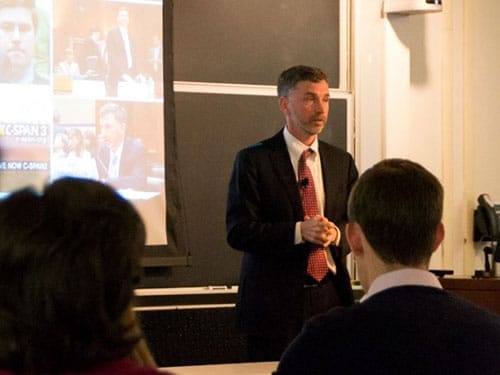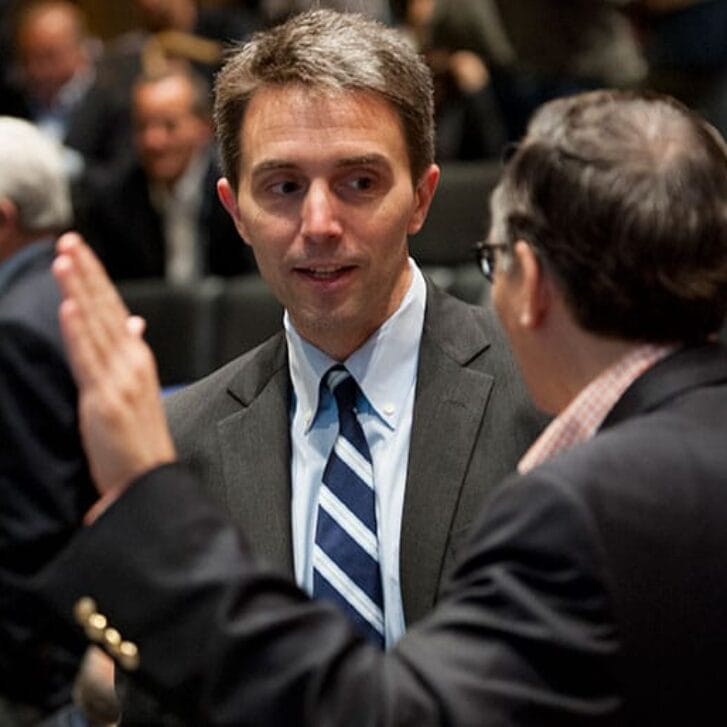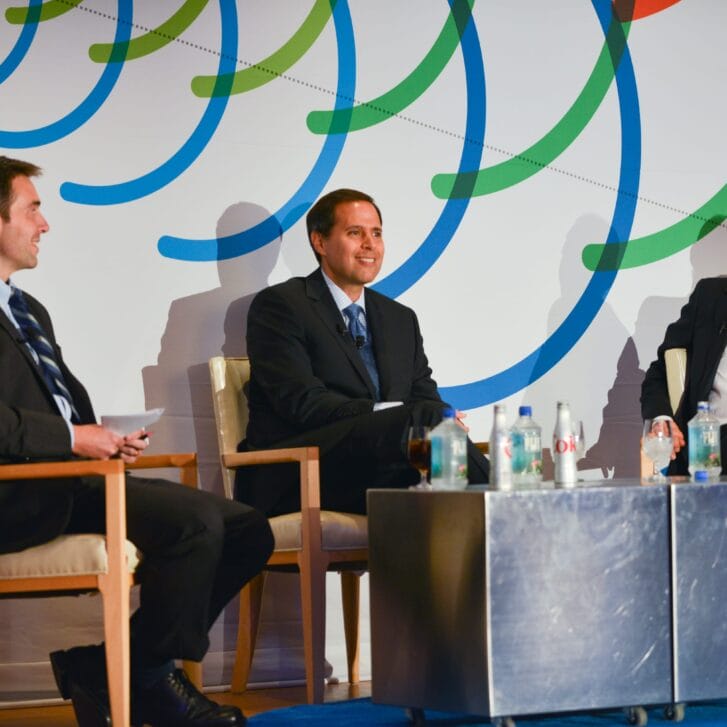Dan M. Tangherlini, WG’01, had a “parlor game” he played with fellow EMBA students when they traveled by train back to Washington, D.C., after a weekend of Wharton Executive MBA classes. The game was prompted by one classmate asking, “How much of this business education will we remember?” From there, they would bandy about the question: “What is the one useful takeaway from class x?” It appears that more than a decade later, as head of the General Services Administration (GSA), Tangherlini still derives value from standout—if not pithy—lessons learned from his Wharton coursework.
For instance, Tangherlini applied the “DuPont analysis” for performance measurement that he learned in finance—particularly when he first took over as GSA acting administrator in April 2012. At the time, GSA was reeling from a financial scandal involving $800,000 spent on a conference and the subsequent resignation of its then-Administrator Martha Johnson and other officials. Tangherlini came in to bring accountability and efficiency to the massive federal agency, in part by going from one end to the other to uncover what was worth investing in and what needed to be divested of.
DuPont analysis—“dividing stuff by other stuff,” as Tangherlini puts it—helped. Tangherlini recounted one instance in which GSA was considering consolidating two office buildings into one. He divided the cost of the move by the number of employees being moved and realized it would cost $60,000 per employee. This was the simple math that perhaps wasn’t done at GSA previously.
In his Wharton macroeconomics class, Tangherlini learned another principle: Expectations are the single biggest driver of interest rates. And the practical application of this principle for public service at the highest level? If you change people’s expectations of an organization, you change that organization’s trajectory. For GSA, that came down to the mission statement. Ditching the organization’s old, vague statement, Tangherlini carried out an innovation tournament of sorts across GSA’s 12,000 employees. The result is crisp and clear—and something you could share with your family over Thanksgiving, Tangherlini said.
“The mission of GSA is to deliver the best value in real estate, acquisition, and technology services to government and the American people,” is the official mission statement now.
The lesson also came in part from a Wharton organizational theory class. The takeaway was that “You have to have a clear partnership with folks if you want to deliver a great product,” Tangherlini said.
Tangherlini also remembered a lesson from operations management: Nothing moves faster in any organization than the bottleneck. The translation to his role at GSA? Don’t be the bottleneck. He moved out of the customary, 1,600-square-foot office of the GSA administrator, with its wood paneling for walls and monumental desk, to a cube among every other employee.
GSA reforms have led to real-world efficiency and cost-cutting. One “Great Ideas Hunt,” an innovation tournament for GSA employees, created more than $5 million in savings when winning ideas were put into action. Organizational consolidation is expected to save $200 million over the next 10 years, according to GSA estimates.
Takeaways from his Wharton days formed the crux of a speech Tangherlini shared with Penn students Feb. 26 as a guest lecturer of the Penn Wharton Public Policy Initiative.


























